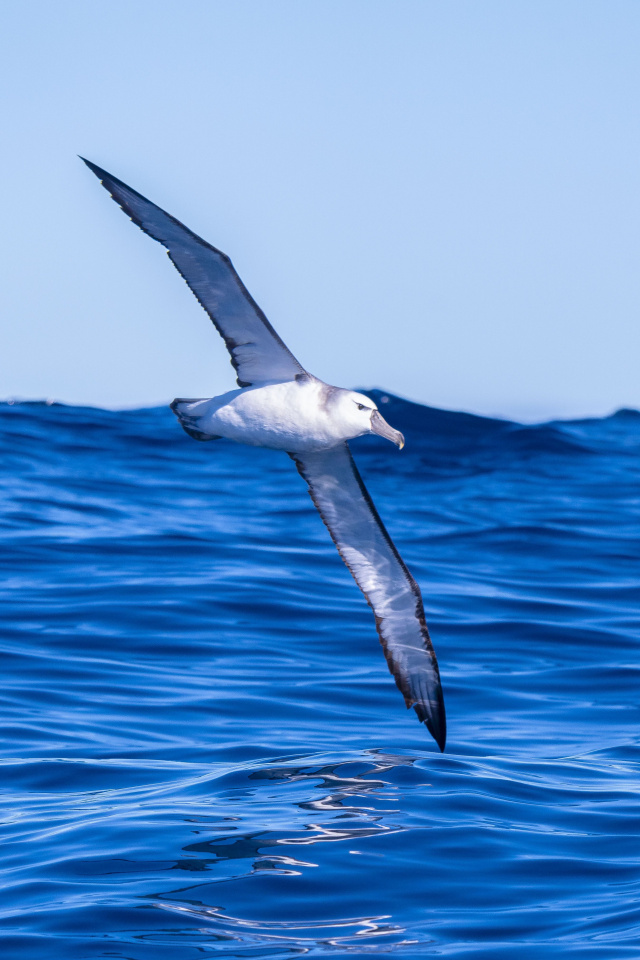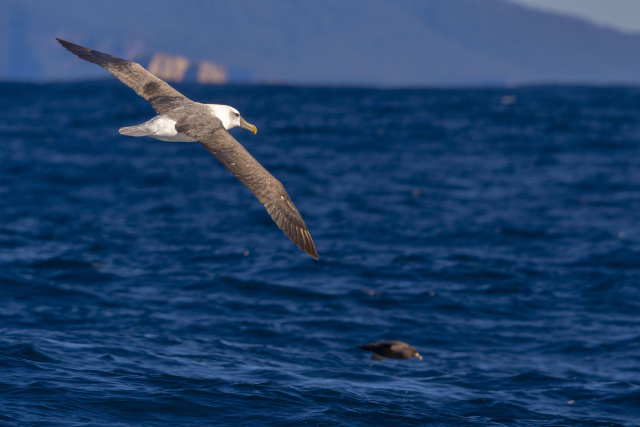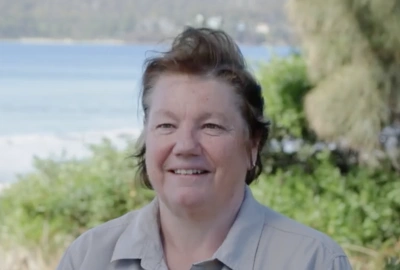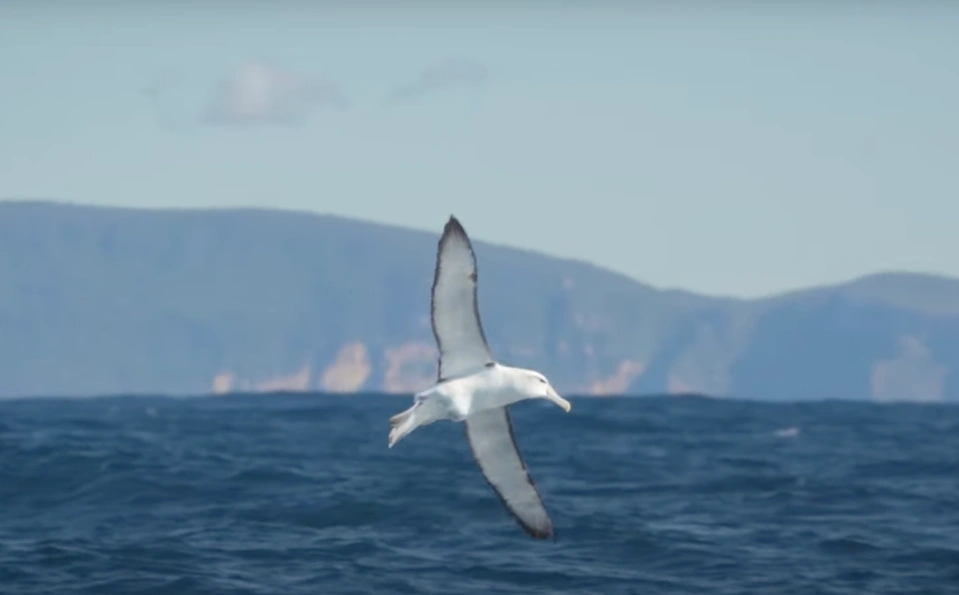Albatross: a life at sea

Albatrosses, petrels, shearwaters, those are the species that I really love. A lot of those species you only see if you get out as far as the continental shelf.
So you take special trips on a boat to go and find these things. Like wandering albatross - it's very very very rare that you would see a wandering albatross on shore. It would have to be after a massive storm, or an ill bird.
But if you go out to the shelf, I would expect to see them on most trips that I get 35 kilometres offshore.
The most common albatross that we find in Tasmania is the Tasmanian shy albatross, which is very, very closely related to the New Zealand white capped albatross. And there is a very common albatross that we find in the New Zealand white capped albatross. There are two sites around Tasmania that these birds breed.
There's one south of Bruny on Pedra Branca, and the other one way up in the north in Bass Strait at Albatross Island. So they spend all of their time at sea, they come back to these islands and they mate.

They're very long-lived birds, lots of the albatrosses are long-lived.
We had one that had bands on a couple of weeks ago that was 46 years old. Banded 46 years ago. Long-lived birds and therefore slow breeders.
They don't breed for the first few years. And for some of these albatross species, it can be seven or eight years before they come back to these islands. And they usually go back to the islands that they've been born on, and they breed there.
So most of the albatrosses we see around here, we assume come from albatross on Pedra Branca. But - they are unbelievably difficult to tell apart from New Zealand white-capped albatross and in Bass Strait there are birds tagged with satellite tags that we've thought are shy albatross, and have ended up back in New Zealand, so are actually white-caps.

There are a few conservation challenges now. Climate change is an obvious one and we are seeing even down here, changes in the makeup of the species that we see.
There's a lot of research going on in various institutions about what happens to seabirds with climate change, warming waters, reductions in food availability.
Avian flu in the northern hemisphere has reached South Georgia via giant petrels or skewers on the other side of the world and we are anticipating that it might end up here. We don't know what that's going to look like and the levels at which that might impact things so that's something to watch out for.

For albatrosses one of their massive issues is fisheries bycatch. That has been an ongoing issue for decades.
They tend to hang around fishing trawlers, and where you've got long line fishing fisheries, they often try to take the bait off the hooks and then get dropped under the water and drown.
There are a lot of mitigation measures in place now, but fisheries is still an issue I think for most albatross.


Karen Dick

Albatrosses, petrels, shearwaters, those are the species that I really love. A lot of those species you only see if you get out as far as the continental shelf.
So you take special trips on a boat to go and find these things. Like wandering albatross - it's very very very rare that you would see a wandering albatross on shore. It would have to be after a massive storm, or an ill bird.
But if you go out to the shelf, I would expect to see them on most trips that I get 35 kilometres offshore.
The most common albatross that we find in Tasmania is the Tasmanian shy albatross, which is very, very closely related to the New Zealand white capped albatross. And there is a very common albatross that we find in the New Zealand white capped albatross. There are two sites around Tasmania that these birds breed.
There's one south of Bruny on Pedra Branca, and the other one way up in the north in Bass Strait at Albatross Island. So they spend all of their time at sea, they come back to these islands and they mate.

They're very long-lived birds, lots of the albatrosses are long-lived.
We had one that had bands on a couple of weeks ago that was 46 years old. Banded 46 years ago. Long-lived birds and therefore slow breeders.
They don't breed for the first few years. And for some of these albatross species, it can be seven or eight years before they come back to these islands. And they usually go back to the islands that they've been born on, and they breed there.
So most of the albatrosses we see around here, we assume come from albatross on Pedra Branca. But - they are unbelievably difficult to tell apart from New Zealand white-capped albatross and in Bass Strait there are birds tagged with satellite tags that we've thought are shy albatross, and have ended up back in New Zealand, so are actually white-caps.

There are a few conservation challenges now. Climate change is an obvious one and we are seeing even down here, changes in the makeup of the species that we see.
There's a lot of research going on in various institutions about what happens to seabirds with climate change, warming waters, reductions in food availability.
Avian flu in the northern hemisphere has reached South Georgia via giant petrels or skewers on the other side of the world and we are anticipating that it might end up here. We don't know what that's going to look like and the levels at which that might impact things so that's something to watch out for.

For albatrosses one of their massive issues is fisheries bycatch. That has been an ongoing issue for decades.
They tend to hang around fishing trawlers, and where you've got long line fishing fisheries, they often try to take the bait off the hooks and then get dropped under the water and drown.
There are a lot of mitigation measures in place now, but fisheries is still an issue I think for most albatross.

You might like...

It started in South Africa

Tasmania: every day's a birding day

Pelagic Trip - Eaglehawk Neck

The amazing migration
Newsletter
Sign up to keep in touch with articles, updates, events or news from Kuno, your platform for nature
